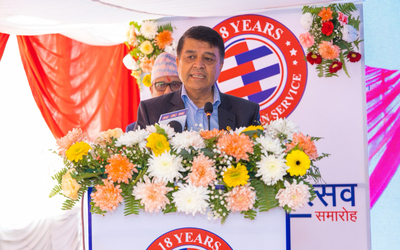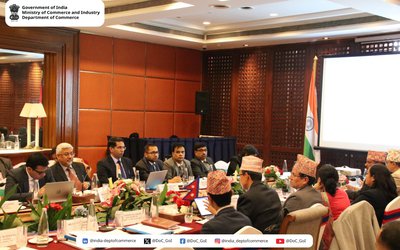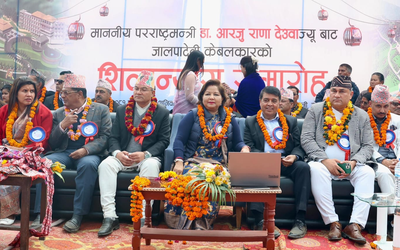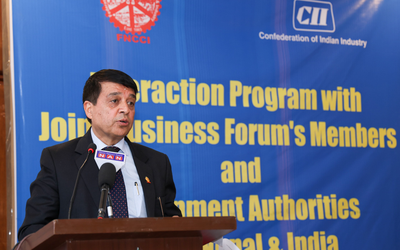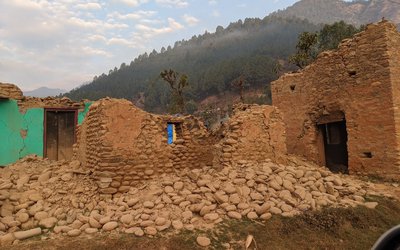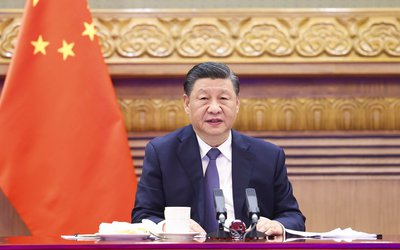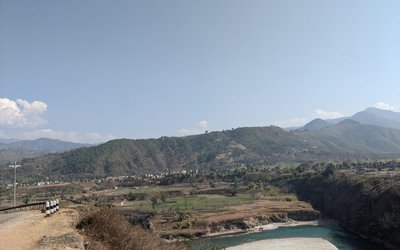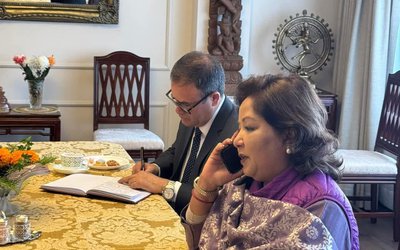
As permitted by India, Nepal Electricity Authority (NEA) has started to export all 364 MW of electricity to India from today. Nepal entered a new stage from a net importer of electricity to a net exporter.
The starting of electricity trade between Nepal and India also proves wrong and irrelevant an ill-conceived perception of handsome of Nepali that India cannot import electricity from Nepal.
Exporting the electricity to India, NEA has also made irrelevant the negative connotation of a few so-called pseudo-nationalists that India will not purchase Nepalese electricity.
Selling at a good competitive price, NEA has also shown to the common people that Nepal can generate the money from trading electricity with India proving irrelevant the perception of a few people that Nepal should not export electricity to India at a cheap price.
“I am proud to say that start of the export of electricity to India sends the message to the common people that Nepal can benefit by selling electricity to India,” said Managing Director of NEA Kul Man Ghising. “This is a historic milestone in the bilateral electricity trade between the two countries.”
There is a reason for MD Ghising to be proud. During his tenure as MD Ghising ended decade-long load shedding contributing to the over GDP of the country and completed the number of stalled projects.
In his second tenure, MD Ghising set another milestone placing NEA from net importer of electricity to net exporter and changing gall ill-conceived and negative perception among the people regarding Nepal-India electricity trade.
Managing Director of Nepal Electricity Authority Ghising said that NEA has started to export 364 MW of electricity from today. MD Ghising termed the event as a milestone in the Nepal-India electricity trade.
The NEA earlier started selling 37.7 MW of electricity generated by its 24 MW Trishuli and 15 MW Devighat power plants on June 2 after NEPAL’S power plants started generating surplus energy. Nepal has been selling electricity under India Energy Exchange Limited (IEX).
On April 6, India allowed the NEA to sell additional electricity generated from four hydropower projects — Kali Gandaki (144MW), Middle Marsyangdi (70MW), and Marsyangdi (69MW) — all developed by the NEA, and Likhu 4 Hydropower Project with 52.4MW capacity, developed by the private sector. Earlier, Nepal was allowed to sell electricity generated by Trishuli 24 MW and Devighat 19 MW.
During the recent visit of Nepal Prime Minister Sher Bahadur Deuba to India, Nepal had received approval from the Indian side to export up to 364 MW of electricity to the Indian energy market.
The designated authority of India had granted the NEA permission to supply an additional 326 MW to be traded in the Indian power-exchange market.
After the entry of 51 MW of Likhu 4 on June 10, developed by private party Green Venture, Nepal’s approved quantum to sell electricity under IEX has been completed.
All the electricity under IEX is exported to Indian market through the 400 kV Dhalkbar-Mujafarpur cross-border transmission line.
MD Ghising that this is a milestone in the history of bilateral electricity trade between Nepal and India.
“We are exporting all the surplus electricity to India. This ends the possibility to waste the electricity which are not consumed domestically for now,” said MD Ghising. “We have been constantly in discussions with authorities in India to export additional surplus electricity to India.”
“All have to appreciate and thank the generosity shown by India towards Nepal by providing access to Nepalese electricity in the Indian market. This will carry a positive message at the public level. This has changed the perception,” said MD Ghising.
For Friday, the highest price set in the market is IRS 12 (Rs.19.2) and the average IRS 2.499 (Rs.39984). However, the average rate per unit is IRS. 7.14 (NRS. 11.42). On behalf of NEA, NVVN makes transactions of Nepalese electricity in the Indian market. They will send the prices of electricity to be sold in the Indian market by 6 PM every day.
With this, Nepal India electricity trade has entered a new phase. Constructed with the domestic capital with the involvement of three big Indian companies, allowing 456 MW Upper Tamakosi in the Indian market will be another gift to Nepal.
- National Earthquake Safety Day Today
- Jan 15, 2025
- Yoga Day celebrated In Various Parts Of The Country
- Jan 15, 2025
- Weather Forecast: Partly Cloudy In Hilly Some Regions of Gandaki, Bagmati and Koshi and Mainly Fair In The Rest
- Jan 15, 2025
- Foreign Minister Dr Rana Requested Qatar's Minister To Support To Release Bipin Joshi
- Jan 14, 2025
- Tharu Community Celebrates Maghi
- Jan 14, 2025
